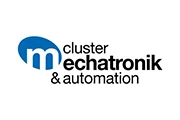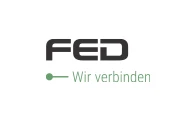Cycle time-optimised flux application
Almost all selective joining processes require selective application of the flux.
Benefit
Integrated flux application is possible in every process cell and, depending on the application process, can also be carried out independently of the position. Precise wetting of the relevant assembly areas is guaranteed with every application process.
Performance
Efficient, clean, cycle time-optimised and reproducible flux application is guaranteed by the flux modules from EUTECT.
Modularity
EUTECT has the right flux application process for every soldering process, every assembly geometry and for all components used.
Product highlights
- Flux modules can be freely integrated and expanded
- Quantity and position-monitored injectfluxing
- Splatter-free brush fluxing
- Area-efficient spray fluxing
- Cycle time-optimising lift-dip fluxing
- Sustainable flux preparation
- Reproducible flux monitoring
Application method
High-precision inject fluxing
The non-contact, cycle time-optimised flux application using an inject flux head can be carried out from all directions and is independent of the position or installation situation. The flux points can be parameterised in terms of quantity and position using an intuitive visualisation system. Subsequent insertion of new points is also possible intuitively and without great effort via product visualisation. Process reliability during inject fluxing is guaranteed by optical sensors. This means that quantity and position-monitored inject fluxing can be offered. This results in a reproducible flux application that can be varied at specific points or over a wide area and logged using production data acquisition (PDA).
Cycle time-optimising lift-dip fluxing
Lift-dip fluxing is a suitable application method for all flux types. A reproducible wetting height can also be achieved with fluxes with a high solids content: the scoops are moved to a defined height on the product using a lifting unit. The overflow of the scoops determines the height of the flux. The flux is pumped through a circuit, any increase in the solids content is detected via density measurements and signalled to the operator. During downtimes, the flux is automatically covered to prevent the flux from evaporating quickly and the scoops from drying out.
Splatter-free brush fluxing
Brush fluxing enables very precise preparation of the process area with an area-wide application. It is possible to wet several flux points in parallel without splashing using several brushes, reproducibly and with optimised cycle times. This process is used from flux point diameters of 1.5 mm. The contact method allows a high proportion of solids to be applied.
Area-efficient spray fluxing
Defined areas on the assembly can be wetted with a flux using a spray module. The application is contactless and very precise. The spray fluxer can draw the flux directly from the canister or a connected container.



